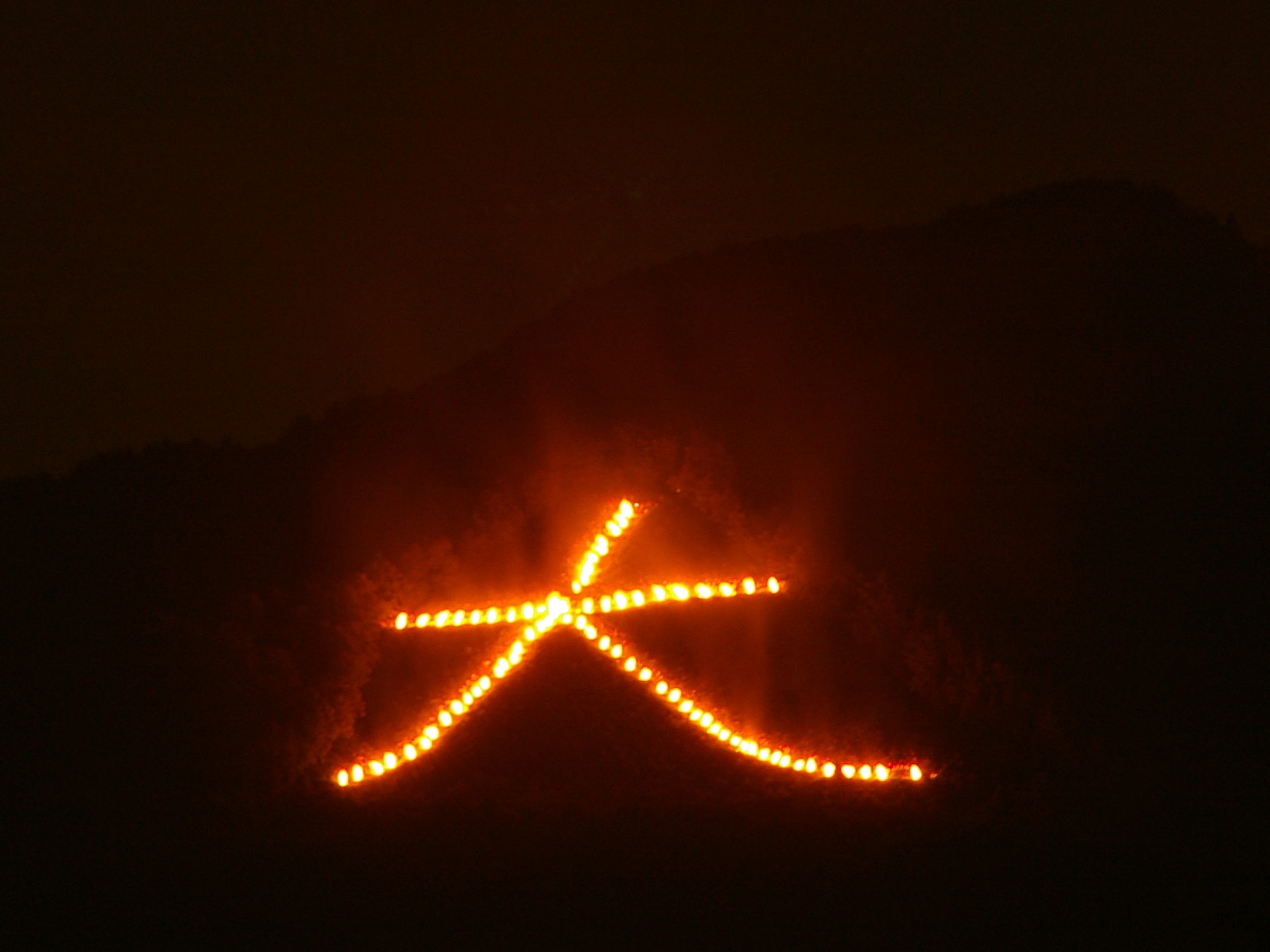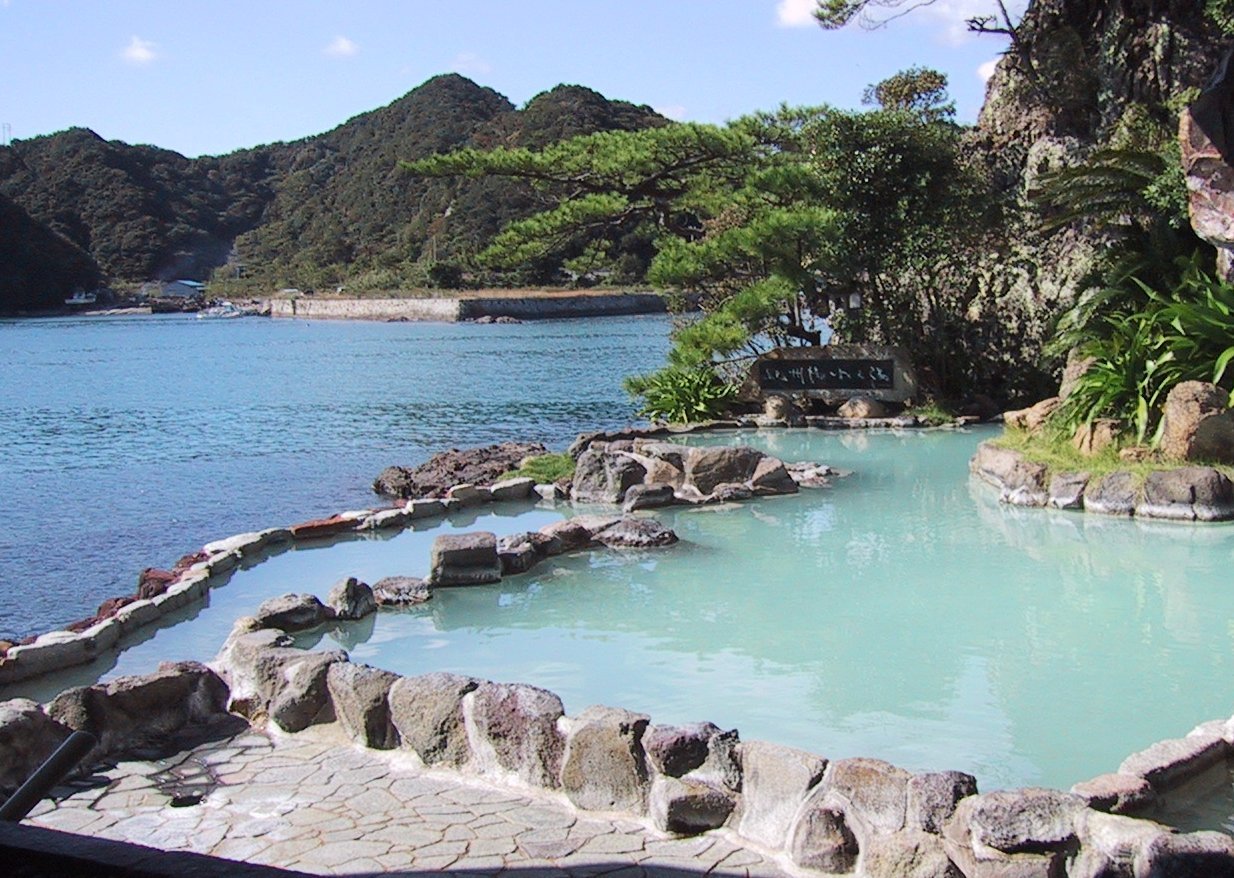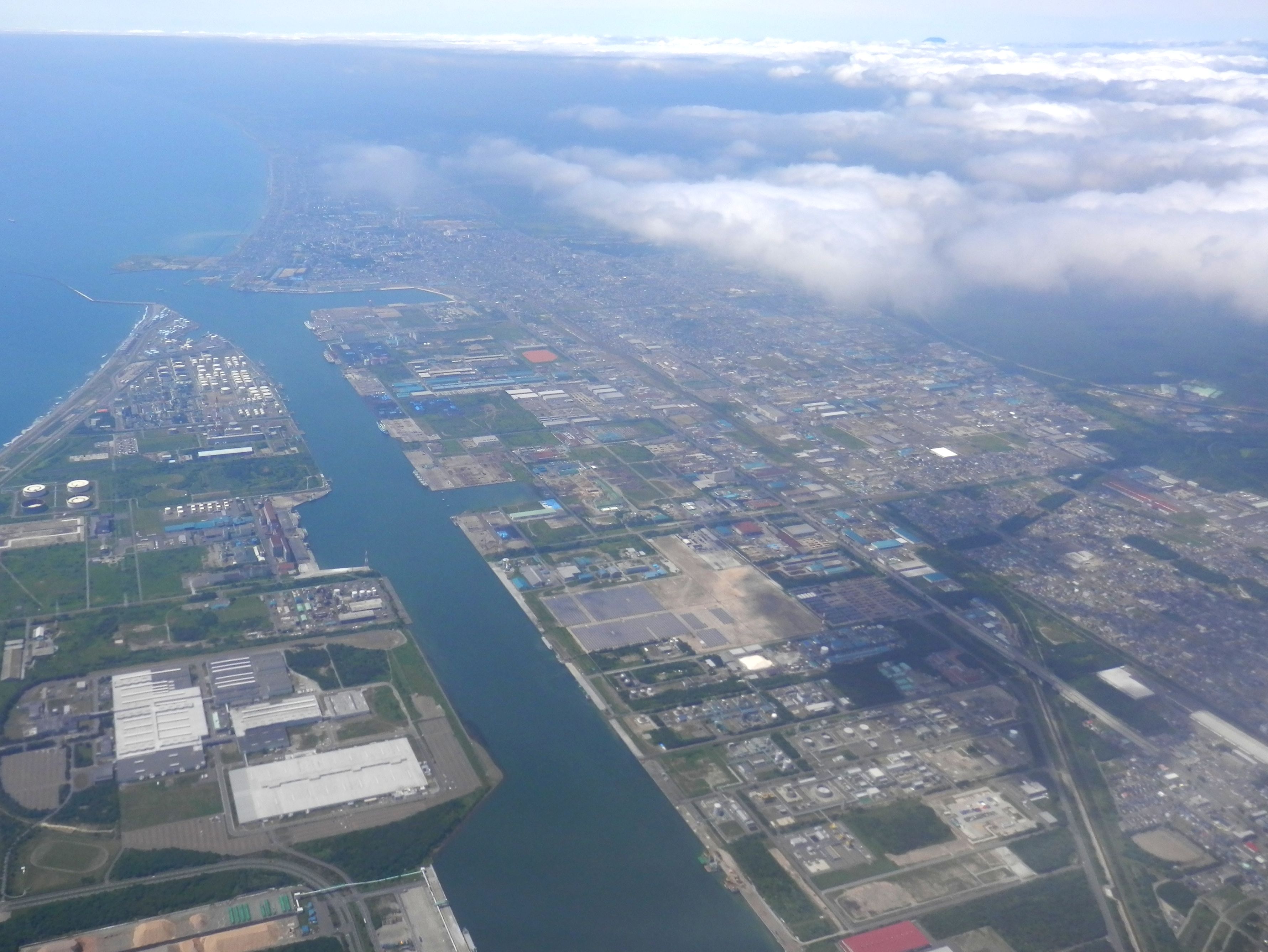|
Mukawa, Hokkaidō
is a town located in Iburi Subprefecture, Hokkaido, Japan. On March 27, 2006, absorbed the town of Hobetsu to create the new town of Mukawa. The new town was given the same name as the former town of Mukawa, but in hiragana, instead of former kanji name. As of April 30, 2017, the town (including the Hobetsu area) has an estimated population of 8,527, with a total of 4,369 households. The total area is 166.43 km². Mukawa is situated on the southern coast of Hokkaido, bordering the Pacific Ocean. It can be accessed via train from Tomakomai. By car, the town is approximately 1/2 hour east of Tomakomai along Route 235. The town is famed for shishamo, a small fish that is hung on bamboo poles. Shishamo are currently included in the Mukawa town sign. The shishamo are harvested during the Fall season. During this season the town holds a number of shishamo themed events, including a town race in October and Shishamo Matsuri in November. A large community center in the town fea ... [...More Info...] [...Related Items...] OR: [Wikipedia] [Google] [Baidu] |
Hokkaido
is Japan's second largest island and comprises the largest and northernmost prefecture, making up its own region. The Tsugaru Strait separates Hokkaidō from Honshu; the two islands are connected by the undersea railway Seikan Tunnel. The largest city on Hokkaidō is its capital, Sapporo, which is also its only ordinance-designated city. Sakhalin lies about 43 kilometers (26 mi) to the north of Hokkaidō, and to the east and northeast are the Kuril Islands, which are administered by Russia, though the four most southerly are claimed by Japan. Hokkaidō was formerly known as ''Ezo'', ''Yezo'', ''Yeso'', or ''Yesso''. Nussbaum, Louis-Frédéric. (2005). "Hokkaidō" in Although there were Japanese settlers who ruled the southern tip of the island since the 16th century, Hokkaido was considered foreign territory that was inhabited by the indigenous people of the island, known as the Ainu people. While geographers such as Mogami Tokunai and Mamiya Rinzō explored the isla ... [...More Info...] [...Related Items...] OR: [Wikipedia] [Google] [Baidu] |
Kanji
are the logographic Chinese characters taken from the Chinese family of scripts, Chinese script and used in the writing of Japanese language, Japanese. They were made a major part of the Japanese writing system during the time of Old Japanese and are still used, along with the subsequently-derived syllabic scripts of ''hiragana'' and ''katakana''. The characters have Japanese pronunciation, pronunciations; most have two, with one based on the Chinese sound. A few characters were invented in Japan by constructing character components derived from other Chinese characters. After World War II, Japan made its own efforts to simplify the characters, now known as shinjitai, by a process similar to China's simplified Chinese characters, simplification efforts, with the intention to increase literacy among the common folk. Since the 1920s, the Japanese government has published character lists periodically to help direct the education of its citizenry through the myriad Chinese characte ... [...More Info...] [...Related Items...] OR: [Wikipedia] [Google] [Baidu] |
JR Hokkaido
The is one of the constituent companies of the Japan Railways Group (JR Group), and is often referred to using its official abbreviation of . It operates intercity and local rail services in Hokkaido, Japan. The company introduced Kitaca, a smart card ticketing system, in autumn 2008. At the time of its privatization in 1987, JR Hokkaido operated 21 railway lines totalling of narrow-gauge () track, as well as a ferry service to Aomori. Since then, that figure has dwindled to just below , as unprofitable lines have been shut down or spun off (in the case of the Hokkaidō Chihoku Kōgen Railway). The ferry service has also been replaced by the Seikan Tunnel. On 19 November 2016, JR Hokkaido's president announced plans to further rationalize its network by the withdrawal of services from up to 1,237 km, or about 50% of the current network, including closure of the remaining section of the Rumoi Main Line (the Rumoi - Mashike section closed on 4 December 2016), the Shin-Yuba ... [...More Info...] [...Related Items...] OR: [Wikipedia] [Google] [Baidu] |
Japan Meteorological Agency
The , abbreviated JMA, is an agency of the Ministry of Land, Infrastructure, Transport and Tourism. It is charged with gathering and providing results for the public in Japan that are obtained from data based on daily scientific observation and research into natural phenomena in the fields of meteorology, hydrology, seismology and volcanology, among other related scientific fields. Its headquarters is located in Minato, Tokyo. JMA is responsible for gathering and reporting weather data and forecasts for the general public, as well as providing aviation and marine weather. JMA other responsibilities include issuing warnings for volcanic eruptions, and the nationwide issuance of earthquake warnings of the Earthquake Early Warning (EEW) system. JMA is also designated one of the Regional Specialized Meteorological Centers of the World Meteorological Organization (WMO). It is responsible for forecasting, naming, and distributing warnings for tropical cyclones in the Northwestern ... [...More Info...] [...Related Items...] OR: [Wikipedia] [Google] [Baidu] |
Bon Festival
or just is fusion of the ancient Japanese belief in ancestral spirits and a Japanese Buddhist custom to honor the spirits of one's ancestors. This Buddhist–Confucian custom has evolved into a family reunion holiday during which people return to ancestral family places and visit and clean their ancestors' graves when the spirits of ancestors are supposed to revisit the household altars. It has been celebrated in Japan for more than 500 years and traditionally includes a dance, known as . The festival of Obon lasts for three days; however, its starting date varies within different regions of Japan. When the lunar calendar was changed to the Gregorian calendar at the beginning of the Meiji era, the localities in Japan responded differently, which resulted in three different times of Obon. (Bon in July) is based on the solar calendar and is celebrated around the 15th of July in eastern Japan (Kantō region such as Tokyo, Yokohama and the Tōhoku region), coinciding with . (B ... [...More Info...] [...Related Items...] OR: [Wikipedia] [Google] [Baidu] |
Onsen
In Japan, are the country's hot springs and the bathing facilities and traditional inns around them. As a volcanically active country, Japan has many onsens scattered throughout all of its major islands. There are approximately 25,000 hot spring sources throughout Japan that provide hot mineral water to about 3,000 genuine onsen establishments. Onsens come in many types and shapes, including and . Baths may be either publicly run by a municipality or privately, often as part of a hotel, ''ryokan'', or . The presence of an onsen is often indicated on signs and maps by the symbol ♨ or the kanji (''yu'', meaning "hot water"). Sometimes the simpler hiragana character ゆ (''yu''), understandable to younger children, is used. Traditionally, onsens were located outdoors, although many inns have now built indoor bathing facilities as well. Nowadays, as most households have their own bath, the number of traditional public baths has decreased, but the number of sightseeing ho ... [...More Info...] [...Related Items...] OR: [Wikipedia] [Google] [Baidu] |
Matsuri
Japanese festivals are traditional festive occasions often celebrated with dance and music in Japan. Many festivals have their roots in Traditional Chinese holidays, traditional Chinese festivals, but have undergone extensive changes over time to have little resemblance to their original form, despite sharing the same name and date. There are also various local festivals (e.g. Tobata Gion) that are mostly unknown outside a given prefecture. Unlike most people in East Asia, Japanese people generally do not celebrate the Lunar New Year, its observance having been supplanted by the Western New Year's Day on January 1 in the late 19th century (see Japanese New Year); however, many continue to observe several of its cultural practices. Many Chinese residents in Japan, as well as more traditional shrines and temples, still celebrate the Lunar New Year in parallel with the Western New Year. In Yokohama Chinatown, Japan's biggest Chinatown, tourists from all over Japan come to enjoy the ... [...More Info...] [...Related Items...] OR: [Wikipedia] [Google] [Baidu] |
Shishamo
, or ''Spirinchus lanceolatus'', is an anadromous fish (smelt) native to Hokkaido, Japan. Description This fish averages 15 centimeters in length, with a maximum recorded length of 70 cm. It is generally dark on the back with a silver-white underside. Etymology The fish is said to resemble a willow leaf, and its Japanese name reflects this; ''shishamo'', is derived from the Ainu name for the same fish, ''susam'', which is supposed to be derived from a compound of Ainu ''susu'' "willow" + ''ham'' "leaf", hence its name in Chinese characters (柳葉魚 jukujikun, where the characters have no phonetic relation to the word). Food use In Japanese cuisine Japanese cuisine encompasses the regional and traditional foods of Japan, which have developed through centuries of political, economic, and social changes. The traditional cuisine of Japan (Japanese: ) is based on rice with miso soup and other ..., this fish is grilled or fried whole and served with its roe intact. Du ... [...More Info...] [...Related Items...] OR: [Wikipedia] [Google] [Baidu] |
Tomakomai
is a city and port in Iburi Subprefecture, Hokkaido, Japan. It is the largest city in the Iburi Subprefecture, and the fourth largest city in Hokkaido. As of 29 February 2012, it had an estimated population of 174,216, with 83,836 households, and a population density of 310.27 persons per km2 (803.60 persons per sq. mi.). The total area is . History The name of Tomakomai is derived from Ainu words "to" and "makomai", meaning "Marsh" and "River which goes into the depths of the mountain", respectively. *1879: Yūfutsu branch of Hokkaidō Development Commission was transferred into Tomakomai (Foundation anniversary). *1902: Tomakomai became second class village. *1918: Tomakomai village became Tomakomai town. *1948: Tomakomai town became Tomakomai city. *1963: Tomakomai Port (West) was opened. *1980: Tomakomai Port (East) was opened. *6 September 2018: Tomakomai City is the nearest city from the epicenter of the 2018 Hokkaido Eastern Iburi earthquake. Geography Mount Tarumae i ... [...More Info...] [...Related Items...] OR: [Wikipedia] [Google] [Baidu] |
Pacific Ocean
The Pacific Ocean is the largest and deepest of Earth's five oceanic divisions. It extends from the Arctic Ocean in the north to the Southern Ocean (or, depending on definition, to Antarctica) in the south, and is bounded by the continents of Asia and Oceania in the west and the Americas in the east. At in area (as defined with a southern Antarctic border), this largest division of the World Ocean—and, in turn, the hydrosphere—covers about 46% of Earth's water surface and about 32% of its total surface area, larger than Earth's entire land area combined .Pacific Ocean . '' Britannica Concise.'' 2008: Encyclopædia Britannica, Inc. The centers of both the |
Population
Population typically refers to the number of people in a single area, whether it be a city or town, region, country, continent, or the world. Governments typically quantify the size of the resident population within their jurisdiction using a census, a process of collecting, analysing, compiling, and publishing data regarding a population. Perspectives of various disciplines Social sciences In sociology and population geography, population refers to a group of human beings with some predefined criterion in common, such as location, race, ethnicity, nationality, or religion. Demography is a social science which entails the statistical study of populations. Ecology In ecology, a population is a group of organisms of the same species who inhabit the same particular geographical area and are capable of interbreeding. The area of a sexual population is the area where inter-breeding is possible between any pair within the area and more probable than cross-breeding with in ... [...More Info...] [...Related Items...] OR: [Wikipedia] [Google] [Baidu] |
Hiragana
is a Japanese syllabary, part of the Japanese writing system, along with ''katakana'' as well as ''kanji''. It is a phonetic lettering system. The word ''hiragana'' literally means "flowing" or "simple" kana ("simple" originally as contrasted with kanji). Hiragana and katakana are both kana systems. With few exceptions, each mora in the Japanese language is represented by one character (or one digraph) in each system. This may be either a vowel such as ''"a"'' (hiragana あ); a consonant followed by a vowel such as ''"ka"'' (か); or ''"n"'' (ん), a nasal sonorant which, depending on the context, sounds either like English ''m'', ''n'' or ''ng'' () when syllable-final or like the nasal vowels of French, Portuguese or Polish. Because the characters of the kana do not represent single consonants (except in the case of ん "n"), the kana are referred to as syllabic symbols and not alphabetic letters. Hiragana is used to write ''okurigana'' (kana suffixes following a kanji ... [...More Info...] [...Related Items...] OR: [Wikipedia] [Google] [Baidu] |




.jpg)
